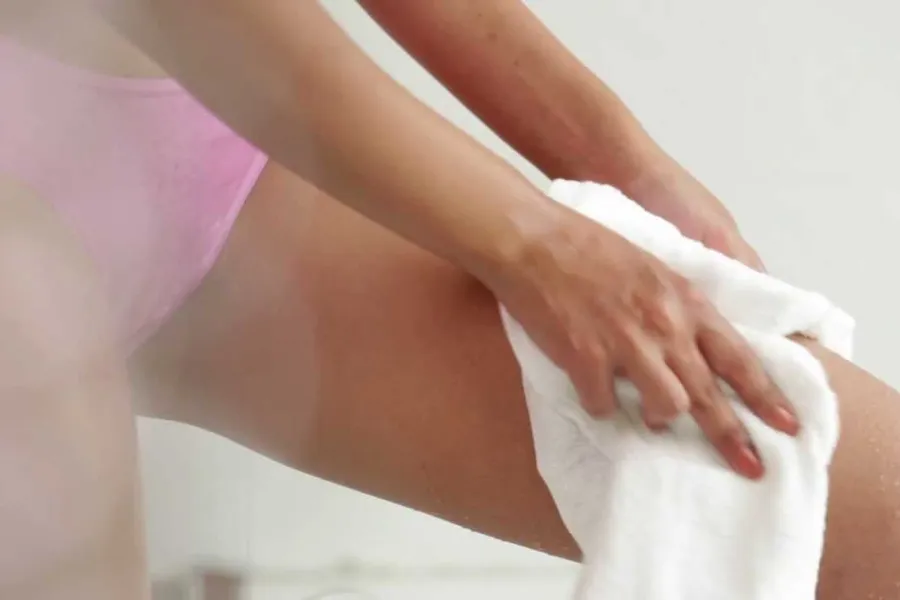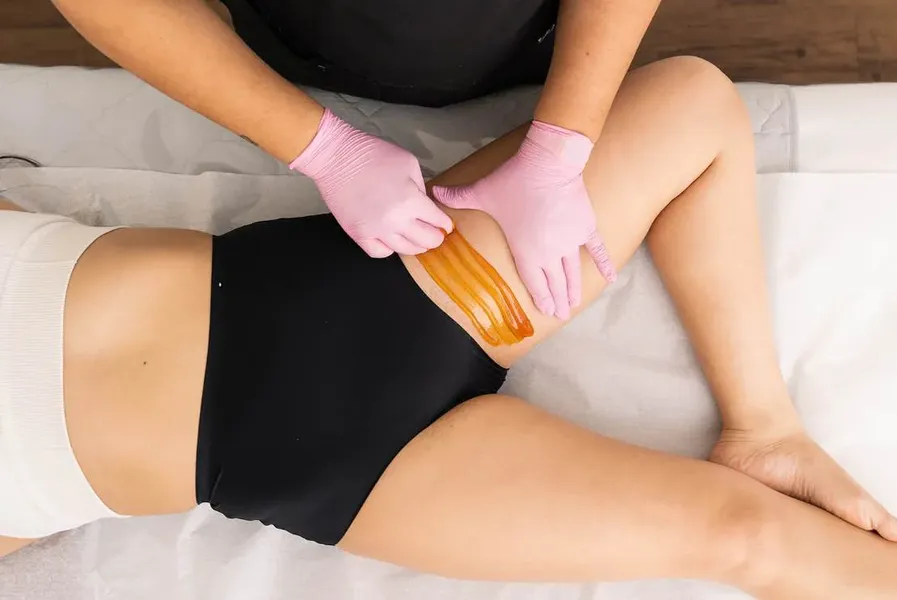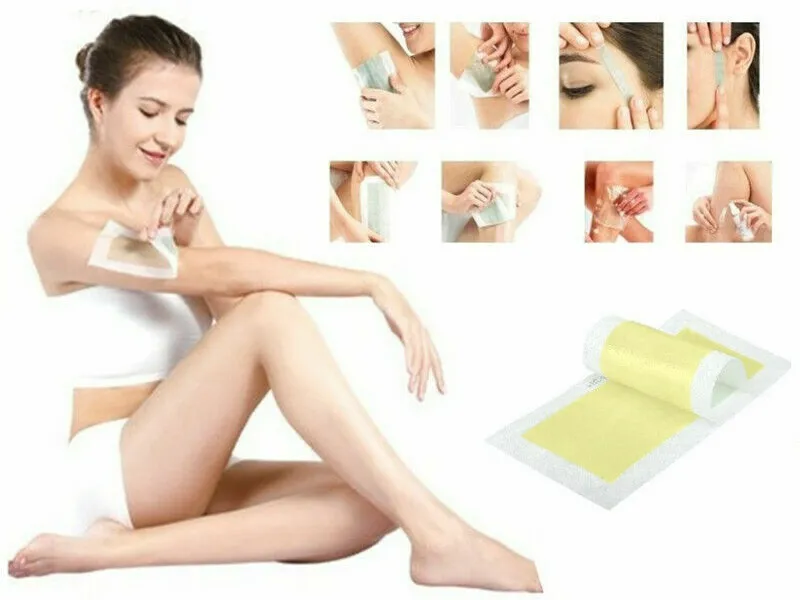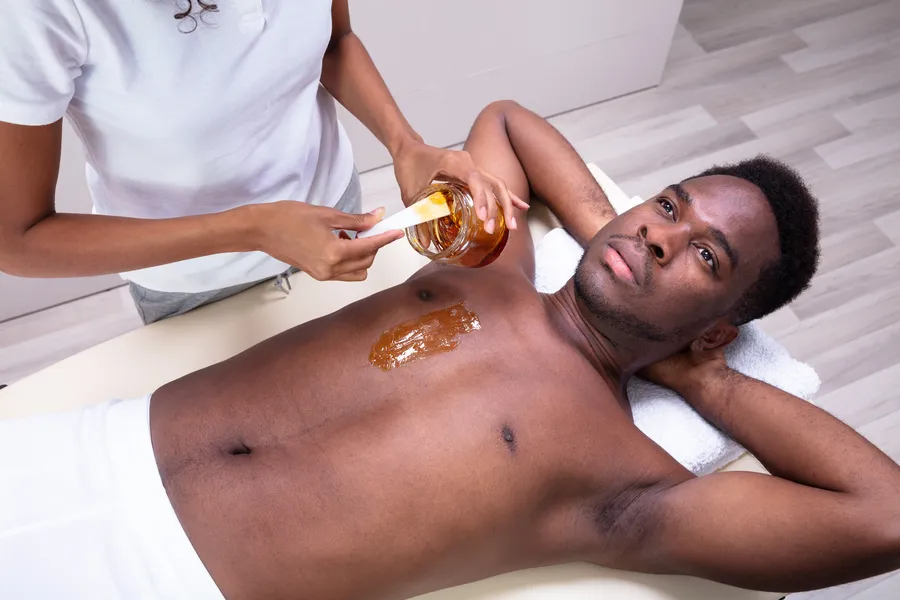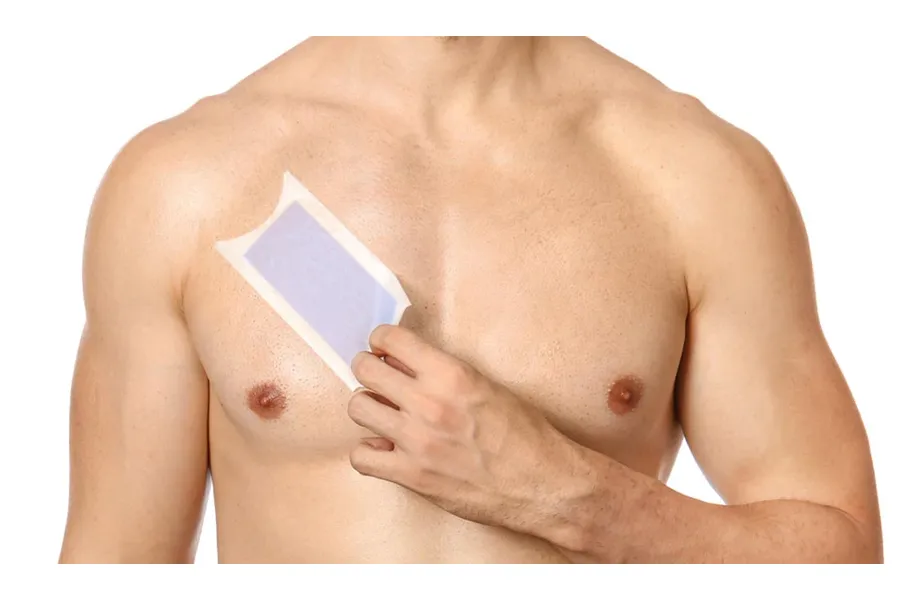Understanding the Basics of Waxing
Did you know that approximately 80% of women in the United States choose waxing as their go-to hair removal method? With options like hard wax and soft wax available, selecting the right type can make all the difference in your experience. Whether you’re a waxing novice or simply looking to refine your technique, understanding these two types can enhance both your effectiveness and comfort.
In this guide, we’ll break down the key differences between hard wax and soft wax, helping you determine which one suits your personal needs. From application methods to hair types, we’ll cover the basics to ensure your waxing experience is as smooth as possible. Let’s dive in and uncover the insights you need for a successful hair removal journey!




HARD WAX vs SOFT WAX: Discover the Ultimate Hair Removal Solution!
What Is Hard Wax?When you think of hair removal, hard wax might just be the transformative solution you’re looking for. Hard wax is a specialized formula that melts to a thick, pliable consistency, which you then apply directly to the skin. The magic happens when it cools and hardens; it grips the hair as it sets without adhering to the skin, making removal straightforward and less painful.
Unique Qualities of Hard Wax
Here are a few standout features that make hard wax a popular choice:
Gentle on Sensitive Areas: Since hard wax sticks to the hair rather than your skin, it creates a gentler experience, perfect for sensitive areas like the bikini line, underarms, and even your face. You’ll find it less irritating than its soft wax counterpart.
Flexibility in Application: Hard wax is applied in a thicker layer, allowing you to mold and shape it easily, accommodating various body contours. This flexibility gives you a bit more control, especially when waxing tricky spots.
Less Mess: Unlike soft wax, which requires strips to remove, hard wax stands on its own. This self-removal feature minimizes the mess and fuss—ideal for at-home waxing sessions.
How It Works
When you heat hard wax, it becomes a thick liquid. You spread it over your desired area in a strip, let it cool slightly, and then quickly pull it off in the opposite direction of hair growth. The result? A smooth finish that leaves your skin feeling soft and refreshed.
And here’s a real-world example: Picture a weekend at home and you realize it’s time for a touch-up. Instead of a salon visit, you can quickly melt some hard wax, apply it, and enjoy the satisfaction of smooth skin in just minutes.
Now that you have a solid overview of hard wax, let’s explore the other side of the spectrum—soft wax.
What Is Soft Wax?When it comes to hair removal, soft wax is a classic option that has been favored for decades. This type of wax is specifically formulated to apply a thin layer onto the skin, adhering not just to the hair but also to the skin itself. This characteristic makes it particularly effective for larger areas, such as your legs or back.
Characteristics of Soft Wax
Soft wax comes with several distinct features:
- Quick Application: Soft wax is typically warmed to a fluid consistency and spread thinly over the skin with a spatula. This allows you to cover more area quickly, making it ideal for larger sections of hair.
- Use of Strips: Unlike hard wax, which hardens and can be peeled off directly, soft wax requires cloth or paper strips for removal. After spreading the wax, you’ll firmly press a strip onto it, let it cool for a moment, and then pull it off quickly in the opposite direction of hair growth.
- Strong Adherence: Soft wax adheres well to the skin, which can be advantageous when removing fine or short hairs. However, this property also means there’s a higher potential for skin irritation, especially for those with sensitive skin.
Benefits and Drawbacks
Benefits:
- Efficiency: It allows for swift hair removal over large areas, reducing the time needed for a full waxing session.
- Fine Hair Removal: Its adhesive properties make it better suited for dealing with shorter, finer hairs that might be missed by hard wax.
Drawbacks:
- Irritation Risk: The adherence to the skin can lead to more discomfort or irritation, which is a consideration if you have sensitive skin or are waxing delicate areas.
- Messier Process: The additional need for strips can create more cleanup challenges than hard wax.
A great option to consider if you’re new to soft wax is the GiGi Student Starter Waxing Kit, which provides a well-rounded introduction to the products and tools you’ll need for effective hair removal.
As we move forward, we’ll compare the key differences between hard and soft wax, helping you to further refine your choice based on your specific needs and preferences.
When it comes to choosing between hard wax and soft wax, understanding their fundamental differences can significantly enhance your waxing experience. Let’s break down some of the most important distinctions you should consider.
Texture and Consistency
- Hard Wax: This type features a thicker, more pliable texture when melted, allowing for easy application. It cools quickly and hardens, creating a barrier that wraps around the hair without sticking to the skin.
- Soft Wax: In contrast, soft wax is much thinner and more fluid. It requires reheating periodically and is applied in a thin layer directly onto the skin.
Application and Removal Methods
- Hard Wax: You apply it directly to the skin using a spatula, allowing it to cool before peeling it off. This method is less painful as it minimizes skin contact during the removal process, ideal for sensitive areas like the bikini line or face.
- Soft Wax: This requires cloth or paper strips to remove the wax. Once you spread the wax, you press a strip onto it, let it set briefly, and then pull it away quickly, which can be a bit more intense.
Ideal Hair Types
- Hard Wax: Best suited for coarse or thick hair, hard wax works wonders on stubborn hairs, often found in sensitive areas. Its grip on the hair rather than the skin reduces irritation.
- Soft Wax: This is often preferred for fine hair removal and larger areas like legs and arms. Its strong adherence allows you to tackle shorter hairs effectively, but it can lead to skin irritation if mishandled.
Cleanup and Mess Levels
- Hard Wax: Because it does not require strips, hard wax is generally cleaner and less messy, making it a favorite for at-home waxing.
- Soft Wax: Requires careful cleanup after use since leftover wax can stick to surfaces, leading to additional effort to keep your workspace tidy.
These differences help highlight which type of wax might work best for you based on your hair type, sensitivity level, and preferred application method. As you consider these factors, let’s look into how to select the right wax for your specific needs and preferences in the upcoming section.
When it comes to selecting the ideal wax for your personal hair removal journey, understanding your unique hair type, skin sensitivity, and the specific areas you wish to wax is crucial. Choosing between hard wax and soft wax can feel overwhelming, but let’s break it down into simple, actionable steps.
Assess Your Hair Type
Coarse Hair: If you have thick, coarse hair, hard wax may be your best friend. Its ability to grip coarse strands without sticking to the skin makes it less irritating during the removal process.
Fine Hair: On the other hand, if your hair is finer, soft wax might be the way to go. It adheres well to shorter hairs and can effectively remove them from larger areas like your legs or arms.
Consider Your Skin Sensitivity
Sensitive Skin: Do you often experience irritation or redness after hair removal? If so, opting for hard wax is advisable. Its method of gripping the hair rather than the skin minimizes discomfort and allows for a gentler experience.
Normal Skin: If your skin isn’t particularly sensitive, soft wax can function well, especially for large areas where efficient removal is key. Just be cautious and perhaps do a patch test to make sure it won’t lead to irritation.
Identify the Area of Application
Delicate Areas: Planning to wax sensitive zones, like your bikini line or underarms? Hard wax shines here. Its thicker consistency and reduced skin contact lower the risk of irritation while still effectively removing hair.
Larger Areas: For broader sections, such as legs or back, soft wax can provide quick and efficient hair removal. Its ability to cover more surface area quickly can save you time, especially if you’re tackling multiple areas.
Practical Example
Imagine prepping for a big event and needing to freshen up. If you’re rushing and your legs are your main concern, grab the soft wax for a speedy session. But if you’re focusing on your bikini line due to an upcoming beach trip, go for the hard wax to ensure you’re kind to your skin where it matters most.
By thoughtfully evaluating your specific needs based on hair type, skin sensitivity, and the areas you wish to wax, you’ll be better equipped to choose the most effective type of wax for your next hair removal session.
Next, let’s delve into the different waxing techniques that work best with hard and soft wax, ensuring you’re set up for success!
When it comes to waxing, mastering the technique is just as important as choosing the right type of wax. Here’s a guide to help you navigate the application and removal processes for both hard and soft wax, ensuring a smooth and irritation-free experience.
Prepping Your Skin
Before you begin, always prep your skin properly:
- Exfoliate: A day before waxing, gently exfoliate the area to remove dead skin, which helps the wax adhere better.
- Cleanse: On the day of waxing, wash the area with mild soap and water to remove any dirt or oils. Pat the skin dry.
- Apply a Pre-Wax Oil: For hard wax, a thin layer of oil can help prevent the wax from sticking too much to your skin.
Applying Hard Wax
- Heat the Wax: Warm the hard wax until it reaches a fluid consistency, usually around 125°F.
- Apply the Wax: Use a spatula to spread the wax on your skin in the direction of hair growth. Ensure the layer is thick enough to hold onto as it cools and hardens, but not too thin.
- Wait for it to Set: Allow the wax to cool for about 20-30 seconds. When it feels firm to the touch, it’s ready to be removed.
Removing Hard Wax
- Grab an Edge: Use your fingers to lift an edge of the wax.
- Remove Quickly: Pull the wax off swiftly in the opposite direction of hair growth, keeping close to the skin to minimize pain.
Applying Soft Wax
- Warm the Wax: Heat the soft wax to a suitable temperature and ensure it’s mixed well.
- Spread the Wax: With a spatula, apply a thin, even layer over the desired area in the direction of hair growth.
- Press the Strip: Immediately place a cloth or paper strip onto the wax, pressing down firmly to ensure it adheres well.
Removing Soft Wax
- Pull Away: Hold your skin taut and quickly pull the strip off in the opposite direction of hair growth. The faster you do this, the less discomfort you’ll feel.
Practical Tips
- For both wax types, work in small sections. This allows better control and efficiency. If you’re using soft wax, keep additional strips handy, such as the , to expedite the process.
- Always follow up with a soothing lotion or aloe vera gel post-wax to calm the skin and reduce irritation.
By understanding and practicing these techniques, you can elevate your waxing skills, leading to a more effective and less painful experience. Next, let’s explore how to care for your skin after waxing and some essential safety tips!
Your waxing experience doesn’t end with the removal of hair; proper aftercare is just as crucial for maintaining smooth skin and preventing irritation. Here are essential aftercare tips for both hard and soft waxing, along with safety advice to keep complications at bay.
Immediate Aftercare
- Avoid Heat: For at least 24 hours post-waxing, steer clear of hot baths, saunas, or intense workouts. Heat can irritate freshly waxed skin and lead to inflammation.
- Moisturize: Apply a soothing moisturizer or aloe vera gel to calm the skin. Look for products that are free from alcohol and harsh fragrances as these can aggravate sensitive skin. A great option is the .
- Limit Sun Exposure: Protect your skin from direct sunlight for a few days. If you need to go out, consider applying sunscreen to the waxed areas to prevent burns or pigmentation.
Potential Risks to Consider
- Irritation and Redness: It’s normal to experience slight redness after waxing, particularly in sensitive areas. If redness lasts more than a day or becomes painful, consult a dermatologist.
- Allergic Reactions: Always perform a patch test before trying a new wax product, especially if you have sensitive skin. Apply a small amount on your wrist and wait 24 hours to check for any reactions.
Preventing Complications
- Exfoliate: Once the skin has calmed down (after about 48 hours), gently exfoliate to prevent ingrown hairs. Use a soft scrub or exfoliating mitt, focusing on areas that are prone to hair growth.
- No Picking or Scratching: Resist the urge to touch or scratch the waxed areas. This can introduce bacteria and potentially lead to breakouts or infections.
- Consult Professionals: If you’re unsure about techniques or products, don’t hesitate to seek advice from a professional esthetician. It’s always better to be safe than sorry when it comes to your skin’s health.
By following these aftercare and safety tips, you’ll ensure that your skin stays healthy, smooth, and irritation-free post-waxing. Understanding how to take care of your skin after and knowing the potential risks can make all the difference in your waxing journey.
Next, let’s wrap everything up in the conclusion, guiding you to make the best waxing decision for your needs!
Making Your Waxing Decision
In conclusion, you now have the essential knowledge to choose wisely between hard wax and soft wax. Remember, hard wax is ideal for sensitive areas and is less painful for those with fine hair, while soft wax is great for larger body areas and is speedy in its application. Consider your skin type, hair thickness, and the specific area you plan to wax when making your decision.
No matter which type you choose, ensure you perform a patch test and follow up with proper aftercare to keep your skin healthy and irritation-free. Waxing can be a freeing experience, so take this newfound confidence and enjoy the smooth, long-lasting results! Your perfect waxing journey is just a decision away.





